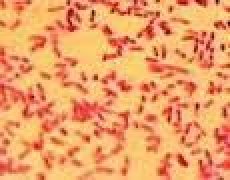Medical expert of the article
New publications
Kingells
Last reviewed: 04.07.2025

All iLive content is medically reviewed or fact checked to ensure as much factual accuracy as possible.
We have strict sourcing guidelines and only link to reputable media sites, academic research institutions and, whenever possible, medically peer reviewed studies. Note that the numbers in parentheses ([1], [2], etc.) are clickable links to these studies.
If you feel that any of our content is inaccurate, out-of-date, or otherwise questionable, please select it and press Ctrl + Enter.

The genus Kingella includes 3 species, the type species being K. kingae. The cells are coccoid or short rods with rectangular ends, 0.5-0.8 µm in size, i.e. smaller than most Moraxella. Kingella form colonies of 1.0-2.0 mm in size on blood agar after 48 hours, sometimes having a mucous consistency. They form a narrow zone of beta-hemolysis on blood agar, but no hemolysis occurs on chocolate agar. At room temperature, blood agar cultures are very poorly preserved. Curdled serum is not liquefied. Some Kingella reduce nitrates to nitrites.
These bacteria do not produce urease, catalase, or phenylalanine deaminase. They are demanding of nutrient media, but adding serum does not improve growth. They ferment glucose and maltose to form acid, but not sucrose, on a medium containing ascitic fluid. The G + C content in DNA is about 44-46 mol%. They are highly sensitive to penicillin. They are most often isolated from pharyngeal mucus, as well as from the mucous membranes of the urogenital tract, nose, abscesses, bone damage, joint disease, etc. Their main habitat is the mucous membrane of the pharynx. Pathogenicity for humans is being determined.

